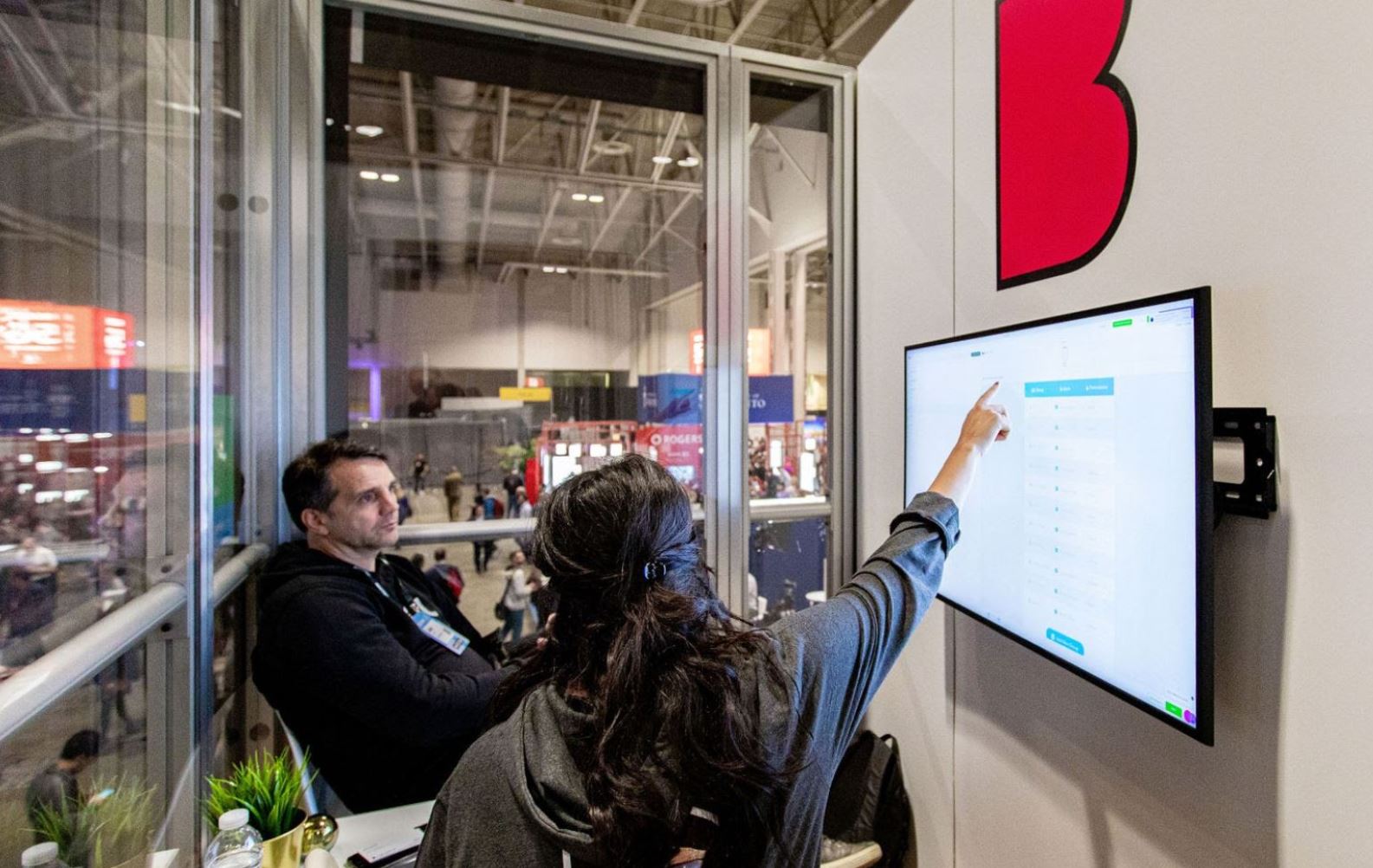If you’re familiar with Builder, then you know that our business model of human-assisted AI is designed to remove all repetitive processes from build to run and scale--making it easy, efficient and cost-effective for all dreamers to bring their ideas to life, even without any tech knowledge. We are able to accomplish this solely because of our ingenious engineers behind the scenes.
They’re the real MVPs. But today, we’d like to introduce you to the MVP leading MVPs on the Builder team. We welcome onboard Dr. Siddhartha Ghosh. He recently joined us at Builder as the Vice President of Intelligent Systems. Sid’s background is varied and vast. Sid, as he likes to be called, served as the VP for Data and Advanced Analytics at Glovo, based in Barcelona. Prior to Glovo, he led data science teams in domains such as energy, telecommunications, marketing and ad-tech, as well as consulting at the Universities of Southampton and Oxford.
His academic work was successfully commercialised in the form of a smart home heating automation startup called Joulo. He has a PhD in machine learning applied to detecting anomalies in imagery and image processing. He is a keen reader of history, politics and anthropology, but also enjoys exploring cuisines and spices which in turn leads to adventures in cooking most weekends. We sat down with him over a delightful cup of coffee to pick his brain on machine learning, artificial intelligence and much more! Discover more about our conversation in detail below.
#1 How would you sum up the responsibilities of your position with Builder? What role does your team, under your leadership, play in the current and future trajectory of the company?
My role is one of building, mentoring and growing a team that will embed intelligence into every product within the Builder portfolio. Essentially, the future iteration of each of our products will be powered by machine learning and artificial intelligence in the form of automated decision making.These are technologies that my team will be responsible for building and instrumenting in conjunction with our product and engineering teams. Every member of my team will be embedded in the development of one or more such products. I believe that to be able to scale Builder and make it more efficient and adaptive, the role that my team will play will be significant. A key stumbling block to Builder’s operational capabilities today is the amount of human intervention required in different parts of the software development lifecycle, which in the long-term has to diminish. By effectively automating some of these steps and enabling autonomous decisions driven by predictive insights, I believe we can deliver far more projects in parallel than is possible today. This is likely to have a significant impact on the overall efficiency and profitability of Builder.
#2 What compelled you most about the opportunity to join Builder and help define the landscape of software development?
A few months ago, I had a difficult decision to make: how to pick between three competing job offers, when, to complicate matters further, a fourth offer from Builder came along. What sealed the deal for me is our overall vision. Software development is inherently inefficient and unnecessarily complex. The complexity of software development deters many would-be entrepreneurs from really taking a leap. Even large organisations, who want to venture into digital innovation, struggle in their execution and delivery of digital apps. I was well aware that a market exists for the Builder platform. So, I believe that by marrying my skill sets with Sachin’s overall vision, we can propel Builder into becoming a remarkable product. I am also genuinely excited by the use cases and problems that present themselves, which I believe to be both unique and novel in their manifestation. I also relish the opportunity to work with global teams in India and in the USA, which should make for a rich cultural and professional experience. For a relatively young company, we are quite far-reaching in our ambition and geographical footprint.
#3 What were some of your earliest career aspirations and interests? How did those change as your journey as a professional engineer began?
Throughout my entire childhood and leading up to my teens, I wanted to be a medical doctor. That didn’t quite pan out as planned. As a young 17-year-old faced with profound life choices, I pivoted towards a career in engineering and technology. More specifically, my interests veered towards more quantitative ideas and problems. During my academic research days, I was fascinated by natural phenomenon and developed a keen interest in nature, physics and biology in particular. The very first academic paper I published was on how to mathematically model collective decision making by honey bee colonies. In the end, I ended up doing a very multi-disciplinary PhD, with a strong emphasis on quantitative data analysis. I realised fairly early on that I quite enjoy diverse problems. My commercial forays, too, have been equally diverse: I have worked in ecommerce, technology, telecommunications, retail, marketing, advertising, and energy--where I have been applying my skills in machine learning and decision making to a range of different problems. I take great pleasure in being able to take on fairly unstructured business questions, casting them into an appropriate quantitative framework and then using data to address those questions, which typically requires making projections into the future.
#4 Can you share any standout moments of your career with us? Are there any projects, accomplishments, or learnings that have been particularly memorable for you?
A project I am particularly proud of is one where I helped the National Grid with a substantive review of their UK gas demand forecasting methodology. I led this engagement to review a methodology which serves as the basis for a document that National Grid publishes nationally every year in the UK, that makes projections for how much gas the UK is likely to need up to 50 years in the future to fulfill its' energy needs. It’s a complex forecasting process. I spent six months working with the National Grid to unravel the problem. I proposed several technical tweaks to their existing methodology. The key insight I discovered was that the way in which weather was incorporated into the framework was resulting in systematic bias in the forecasts, which I was able to fix successfully. Based on my recommendations, the National Grid changed their demand forecasting process to accommodate the advancements I proposed, which had a direct financial and operational impact to their business. Here is the case study along with customer feedback.
#5. You shared that your passion lies in, “applying quantitative analytics to solving critical long-term applied problems.” What has that process looked like operatively during the course of your career? Has machine learning and/or AI always played a role in it?
Machine learning and AI, in the form of autonomous decision, have played a pivotal role in my career thus far; from building novel technological products powered by AI to driving significant commercial and operational decisions based on predictive insights. Some key contributions include:
- Contributing to the development of the machine learning and optimisation algorithms within a novel smart home heating automation product called Joulo--that was a successful spin-off from my postdoctoral research work.
- The aforementioned National Grid case study that had a national impact.
- Building demand forecasting technologies for retail and telecommunication sectors to improve pricing and increasing profitability, as well as enhanced operational efficiency.
- Building products for automating retail marketing campaigns powered by machine learning and AI that yield much higher profitability compared to campaigns run by marketeers themselves.
- Engendering customer loyalty by building data-driven products that model and capture human behaviour.
- Uncovering global commodity market trends for hedge funds by applying advanced machine learning techniques to data coming from satellites.
#6 What are some misconceptions about AI you’ve encountered, namely about what it means to be “powered by AI”?
The word AI is nebulous and it warrants an article in its own right. I will point readers to a particular piece of commentary, which I believe most adequately explains what artificial intelligence is today and where we are on the AI journey. This article was written by Prof. Michael Jordan, who happens to be a leading authority on this subject at the University of Berkeley. His exposition really resonates with me. As Prof. Jordan says, AI today is mainly machine learning including deep learning and its applications in multiple domains. We are still a long way away from artificial general AI where machines can reason and learn about the world through their experiences without requiring human intervention and transfer knowledge between different tasks and settings. Whilst there has been limited success in some domains such as game playing and robotics, the same intelligent agent cannot both beat Garry Kasparov at chess and drive a car autonomously. Their reach and ability is limited to specific domains and a significant amount of human input goes into training the AI agents we have today.
#7 What are some common struggles businesses are turning to AI to help solve, and how do you determine the right strategy, processes, algorithms, etc. to help them do just that?
The common problems that businesses are turning to AI for are:
- Developing a detailed and a holistic view of customers and how to target, retain and attract them to your products and services.
- Improving operational efficiencies by optimising legacy processes and relying on more automated decision making.
- Automating the manual aspects of many legacy processes using technologies such as natural language processing and text mining.
- Demand forecasting, supply provisioning and revenue management powered by machine learning and AI.
- Automating and improving marketing activities through increased reliance on predictive insights and automation.
- Predictive resource allocation in domains such as telecommunications.
- Improved experimentation procedures for releasing product features and data driven product development.
- Understanding market trends and consumer insights using alternative data sources such as social media and imagery.
I believe the common struggles that face businesses today that prevent them from being able to leverage AI and machine learning to transform their business are:
- Lack of representation of technical specialists in the senior leadership. Consequently in many legacy industries there is a sufficient lack of understanding of these technologies at the senior leadership level, which results in a failure to sponsors investment in such areas
- Disjointed organisational structures results in fragmentation of valuable data cross multiple teams.
- Lack of clarity on how to recruit, train and grow data scientists within organisations. No defined career paths.
- Shortage of infrastructure or a dearth of engineering skill sets to take machine learning models into production and realising their full potential
As always, the challenges are down to people and process issues, and to a lesser extent - technology.
#8 The advantages of utilising AI for businesses are clear, but how do these benefits translate to the consumer?
For product organisations, this link is very clear: AI can significantly improve the end user experience of a product and ensure that a product is far more aligned and in tune with a customer’s needs and expectations. AI can also help develop a rich understanding of customer behaviour and their needs, wants, and attitude. A good example of this is the work Netflix does around recommending the right content to users. Netflix spends a significant amount of time, money and effort on such problems, as they are known to drive customer engagement and ultimately customer growth.
#9 In keeping up with the scientific research in the field of AI, have any findings, trends, studies, etc. sparked your interest recently?
A few noteworthy ones are:
- The recent advancements in deep learning applied to domains such as natural language processing and text analysis where substantial improvements are being made towards summarising, understanding and translating natural language which has significant implications across a multitude of domains. Think of Alexa’s conversational capabilities.
- The recent advancements in deep learning applied to the medical imaging domain where such algorithms are now being used to detect anomalies in clinical images at performance levels comparable to, and in some cases surpassing, radiologists.
- One of our own problems, which is being able to synthesise and generate software code and more generally computer programs themselves using AI and machine learning techniques, is a fascinating research question.
#10 With the rate in which AI is pervading into various industries, what specific prediction(s) about its role in our future would you be willing to make?
I prefer not to predict the future. As an Engineer, I prefer to contribute towards building it myself. After all, we are Builder.
Stories published by the editorial team at Builder.ai.












 Facebook
Facebook X
X LinkedIn
LinkedIn YouTube
YouTube Instagram
Instagram RSS
RSS


